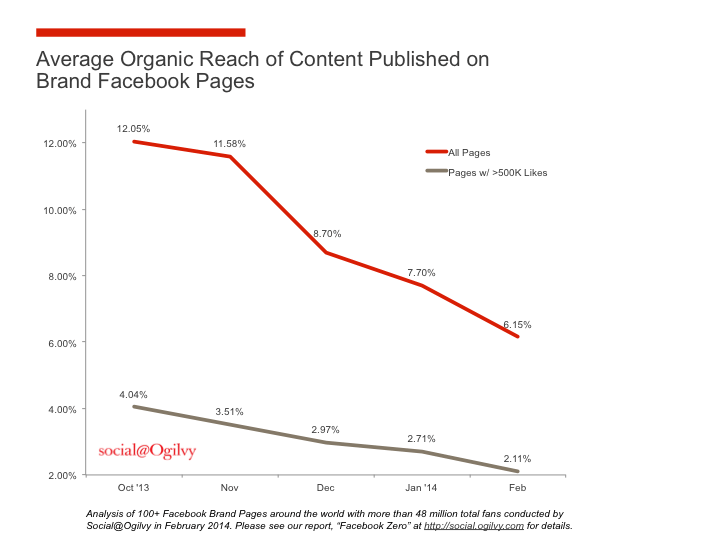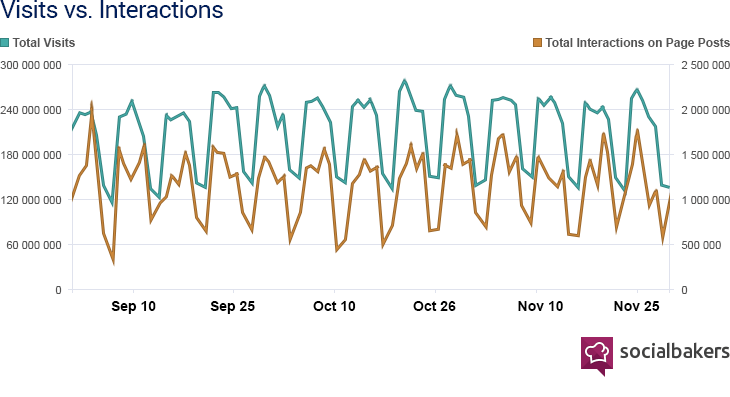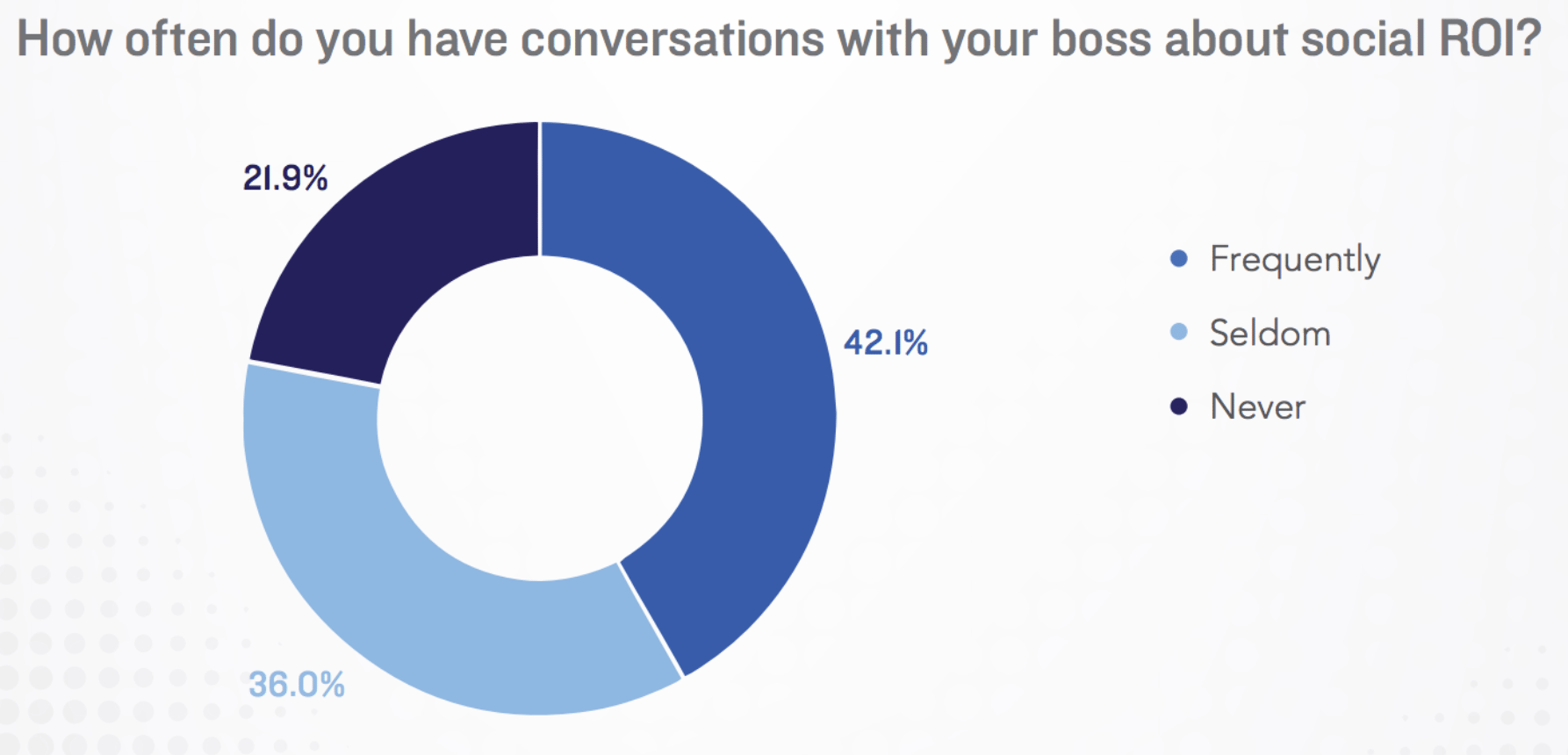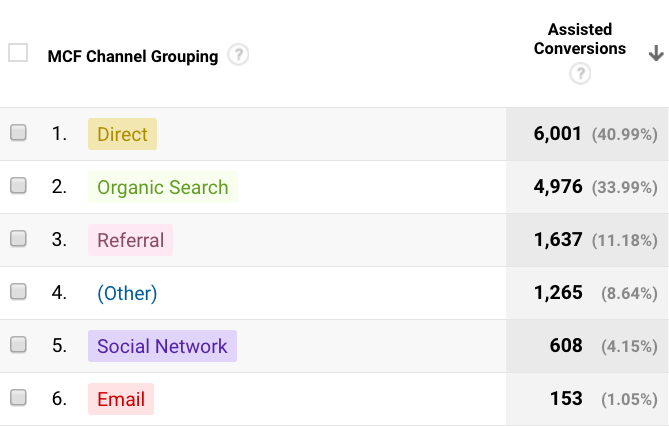
Why I Think Social Media Is For Branding and Engagement, Not Traffic or Revenue
Product Marketing @ Buffer
Social media is changing.
It used to be a one-to-many channel. Businesses would publish links, photos, and videos on Facebook, Twitter, and Instagram, hoping to reach as many people as they can and drive a high number of leads and sales.
When marketers first started using social media as a marketing channel, there was less content, less noise, and people were willing to click on almost everything they saw on their news feed.
Then, we hit content shock.
There is now more content on social platforms than people can consume. If a post doesn’t look interesting or useful, people just scroll past it. As Rand Fishkin observed, “Twitter, Facebook, et al. have become more challenging sources from which to drive traffic. Clicks are just harder to come by.”
Social media is no longer a megaphone.
It is now becoming a one-to-few — and often one-to-one — channel. Businesses and organizations that are succeeding on social media now are the ones providing personalized social experiences to their fans such as KLM Royal Dutch Airlines, NASA, and Airbnb.
Social media is becoming a conversation. Here’s why…
Social media is incredible for some things but not all things
Social media is often seen as a solution to every marketing problem. And, of course, it’s great for certain aspects of marketing including brand awareness. But the truth is, social media probably isn’t going to help you achieve every business or marketing goal you have.
For example, I believe social media is no longer a great traffic driver for most businesses. The strategy of batching and blasting marketing messages across various platforms might have been an effective way to drive clicks in the past, but not anymore. And, in mind at least, that’s not a bad thing because:
Social media is becoming an engagement channel.
And with this shift comes new opportunities, such as incredible customer service and one-on-one conversations, which major social media platforms are embracing more and more with platforms and features like Messenger, Instagram Direct, and Twitter Direct Messages.
Engagement is also about the content you create and share across social platforms. Is it entertaining, useful, or unique? Does it encourage your audience to respond? Or is it just there to drive clicks back to your website?
The future of social media (and some might argue the past and the present of social media) is about deepening your relationships with your fans by engaging them and not simply pushing out marketing messages.
Let’s look at why this shift might be true…
4 reasons why engagement is the future of social media
1. Low organic reach and referral traffic
In recent years, organic reach on social media has fallen so low that social media is becoming a less viable channel for traffic.
Businesses are reaching fewer people on social media and getting less traffic from social media through organic means. Even publishers, businesses that heavily rely on social media for referral traffic, are getting less social referral traffic. Many major publishers have been seeing a fall in Facebook referral traffic — some as much as 50 percent.
As the amount of content on social media increases far beyond what we can consume, each social media post becomes less and less likely to be seen.
Here’s a simplified calculation: if 10 million posts are published per day by users and brands and all social media users collectively consume only one million posts per day, each post has a 10 percent chance of being seen. If the number of posts published per day increases to 100 million and all social media users still consume only one million posts per day, each post now has only a one percent chance of being seen.
The reality is that as more content is published on social media, organic reach will naturally fall.
A study by Social@Ogilvy found that Facebook organic reach has fallen to just six percent in 2014.

The number likely has fallen even further after Facebook made a change to its algorithm to prioritize posts from family and friends over those from Pages.
Social media is losing its potential as a traffic channel as more and more content are posted on social media. As Michael Stelzner, CEO and Founder of Social Media Examiner, said, “Traffic has been going down, down, down and down. For years! That’s the challenge – you’re not getting the reach or visibility and we have to be OK with that reality.”
We have to adapt accordingly.
2. The rise of social messaging (and chatbots)
While social media has been the dominant platform over the last five to 10 years, social messaging apps (messaging apps built around social media platforms) are growing much faster than social media platforms. There are now more people using the top four messaging apps than people using the top four social media apps, as reported by Business Insider.

Activate, a strategy consulting firm, predicted that 1.1 billion more people will use messaging apps by 2018, resulting in 1.5 times more people using messaging apps than people using social media apps.
The rise of social messaging signifies a change in people’s social media behavior and preferences — towards more personal, one-to-one communications. When people view social media, they are no longer just thinking about the posts on their news feed. They are also thinking about reaching your business for customer support through Twitter, receiving timely information or ordering products through your Messenger chatbot.
A company that is at the forefront of this change is KLM Royal Dutch Airlines. Apart from posting interesting content on their one-to-many channels, they have invested a lot in one-to-one channels.
- They have over 200 agents who respond to questions on social media in 14 different languages 24/7.
- They developed a Messenger chatbot that sends boarding pass, flight information, and updates to their passengers. Their passengers can also get customer support and travel directions directly through Messenger 24/7.
- They provide social customer support on WeChat and Kakao Talk, two of the most popular social messaging apps in Asia.
By engaging their social media fans on both one-to-many and one-to-one channels, they were able to gain tremendous business value. For instance, their social media efforts helped to increase their Net Promoter Score from 35 in 2015 to an all-time high of 43 in 2016.
Businesses that only push out marketing content on social media will miss out the opportunity to serve customers in meaningful ways and might be left obsolete on social media.
3. People use social media to reach brands
Social media is the first place most people turn to for customer support, as Sprout Social has found. And more and more people are using social media to get help from brands. The average number of social messages that needed a response from brands had increased by 18% from 2015 to 2016.

People are not only using private social media channels such as Messenger or Twitter Direct Messages to reach businesses for help. Take a look at Airbnb’s Facebook Page and you’ll notice that its users are also commenting on its posts to get help. (And Airbnb does a great job responding and helping them.)
There’re benefits to helping customers on social media. Sprout Social also found that being responsive on social media prompts customers to purchase while ignoring customers causes less brand loyalty.
At the same time, it’s becoming easier to help your customers on social media. To meet this trend, social media platforms are developing more customer service tools to help businesses respond to their customers.
- You can let customers send you a direct message on Twitter without needing you to follow them.
- You can send automated welcome direct messages on Twitter and prompt people with the best ways to reply.
- You can manage all your Facebook, Messenger, and Instagram interactions in a unified inbox.
- You can use Smart Replies to automatically answer frequently asked questions for your Facebook Page.
Businesses have to change their approach towards social media and go beyond just publishing content. You’ll have to be there and help your customers when they ask for help.
4. Algorithms prioritize engagement
Besides engaging customers through customer service and one-on-one conversations, engagement is also about the quality of your content. Is it engaging enough to elicit positive responses from your fans?
To be seen and heard on social media (organically), you need to create content that engages your fans. The number of engagement on your social media posts influences the number of people who would see them.
If many people engage with your post, social media algorithms will take it as a sign that your post is interesting and will more likely show that post to more people. If there are few interactions (or many negative interactions such as “Hide post” on Facebook) on your post, social media algorithms will assume it is uninteresting, irrelevant, or not useful and not show it to as many people. So the more positive interactions on your posts, the more people you will reach on social media.
If your ultimate goal is traffic, leads, or conversions, then the more of such results you can potentially get. Socialbakers studied 30,000 Facebook posts by over 2,700 businesses and found that the more interactions a Page has, the higher the traffic to its website.

What’s the value of engagement?
I believe businesses will no longer join social media because they see it as a strong referral source or direct revenue channel. The primary reason to be on social media will be to build your brand through engagement.
Many businesses are already doing this — strengthening their brand through social media. Some (like KLM, Starbucks, and Nike ) help their customers quickly resolve issues through social media.
Others share content that their fans like and grow their brand through amplification from existing followers, influencers, and social ads. If you look at the social media profiles of brands like Denny’s, Oreo, and GoPro, you’ll notice how they use their content to reinforce their brand image rather than link their fans to their website or directly sell their products.

Social is a way for us to build confidence in the brand by showcasing our personality. Engage with them, inspire them and answer their questions quickly.Hannah Pilpel, social project manager at MADE.COM
But why brand-building with social media is so important?
A customer’s journey with most businesses is not linear
Most customers rarely go from your Facebook Page to your website to your checkout page. It might look more like this:
➡️ Someone hears about your product through a friend.
➡️ On the same day, the customer sees your Facebook post, enjoys the content, and comments on it.
➡️ The following week, the customer searches on Google for a product that you sell and your website appears on the first page.
➡️ She recognizes your brand and tweeted you a question about your product.
➡️ You promptly replied her, and she decided to order the product from your website.
(Even this is a very simplified version of an actual customer journey.)
A study by Sprout Social found that 85 percent of people have to see something on social media more than once before they would purchase it. But they will also unfollow you if you post too many promotional messages.

By engaging your customers through timely customer support, one-on-one conversations, and interesting or helpful content, you can strengthen your brand image. Then, when these customers are deciding if they should purchase or continue to purchase from you, this brand equity can help win them over.
And it’s proven by research.
Social media interactions increase customer loyalty
A group of U.S. researchers studied consumers’ interactions with their favorite brands and their relationship with the brands. They found that consumers who engage with their favorite brands on social media have stronger relationships with those brands than consumers who don’t engage with their favorite brands.
Consumers who engage with their favorite brands on social media are more likely:
- to have a better evaluation of the brands,
- stay loyal to the brands, and
- recommend the brands to others.
When they trust your brand, they’re more likely to give you their email address, sign up for a webinar, or purchase your product when you ask. That’s the reason why MailChimp does so much brand marketing. Their brand marketing creates a bias for MailChimp so that when someone is choosing an email marketing platform, she will think of MailChimp first.
Branding sounds good but…
What about measurable ROI like leads and sales?
Yes, they are important, too.
Marketers and businesses will always want to justify the time, energy, and resources they spend on social media. 78 percent of social media marketers discuss social media ROI with their boss, and 42 percent have such discussions frequently, according to Simply Measured.

If social media ROI is important to you and your business, you can still keep an eye on results that are more directly measurable as you focus on brand-building on social media through engagement.
There are several ways you can measure these results such as through Google Analytics, Facebook Analytics, or Facebook Ads Manager if you are using Facebook ads. Also, as social media platforms develop more shopping features such as Pinterest’s Buyable Pins and Instagram shopping, there’ll likely be more robust analytics to show the monetary value of social media.
Here’re a few examples of how businesses are measuring their social media ROI, according to Econsultancy:
- KLM looked at sales generated from customers who visited their site directly from social media and found that these customers contributed €25 million of sales in 2014.
- BT calculated a cost saving of £2 million per year from providing social customer support as customer support through social media is cheaper than that through the phone.
- MADE.COM compared the average order value of people who went to their site from social and their site average. Their social media fans spend, on average, 4 percent more per order.
- Incontact trained half of their sales reps on social selling and found that these sales rep had a 160 percent bigger sales pipeline and achieved 215 percent more revenue than those without.
It’s important to remember that when you use social media as an engagement and brand-building channel, you might not generate many leads or sales directly from social media. But you would indirectly.
For instance, someone might discover you on social media and, a week later, find you on Google and purchase from you. We will usually credit Google for the purchase when your social media activities actually helped to influence the purchasing decision. Using tools like Google Analytics’ Multi-Channel Funnels or premium social media analytics tools, you can evaluate how your social media activities indirectly helped with lead generation and sales.

Over to you
People’s behaviors on and expectations of social media are (or have been) changing. Social media platform themselves are also adapting to meet this change.
If you want to succeed on social media, I think your primary goal on social media should be brand-building. You have to focus on the “social” of “social media” and engage your fans.
What do you think?
—
We've added engagement features to Buffer to help businesses serve and engage with their fans more effectively on social media. If you want to build your brand and give your followers a better experience on social media, we’d love for you to give Buffer a try.
Try Buffer for free
140,000+ small businesses like yours use Buffer to build their brand on social media every month
Get started nowRelated Articles

TikTok's parent company must divest the app or face a ban in the U.S. Here's everything we know, plus how to plan ahead.

Whether you’re a full-time content creator, micro-influencer, nano-influencer, or just getting started, here’s how to create your own influencer media kit.

In this article, get answers to questions about social media for solopreneurs.